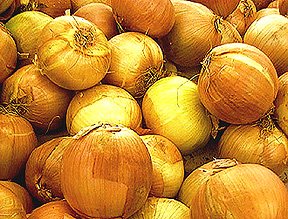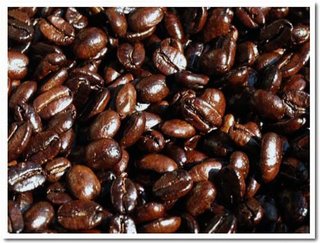Varieties
Red Creole
Red Pinoy
Yellow Granex (Hybrid)
Seed Establishment and Seed Sowing (Nursery)
Seedbed should be located in a weel-drained, friable soil with good water holding capacity and high organic matter content. If soil pH is lower than 5.8 lime application is necessary at the rate of 3 tons/ha applied one month before transplanting.
Land should be prepared by thorough plowings and harrowings. Level and pulverize the soil to facilitate formation of beds (1 meter wide and 20 m long.) Prior to seed sowing, sterilize the beds by burning rice straw on top or by pouring boiling water to prevent pest and disease infestation.
Broadcast chicken manure or compost at the rate of 10t/ha combined with 10 bags 14-14-14. Space 10-15 cm between rows and sow seeds evenly in a row at 5-6 seeds/inch with seeding depth of 1/2 inch. Appoximately 25 grams of seeds is needed per square meter. Irrigation should be applied adequately in the field right after seed sowing. Seeds will germinate at about 7-10 days after sowing and are ready for transplanting 45 days after sowing.
Land Preparation and Formation of Beds
Prepare the field by 2 plowings and 2 harrowings. Level and pulverize the soil to a fine texture to facilitate formation beds.
Raised beds are constructed at 0.5 meter wide by 20 m long (maximum) by 15 cm high. Double row beds will be prepared with a distance of 20-25 cm between hills and with a hole depth of at least 3.5 cm.
Basal Fertilization and Transplanting
Basal application of chicken dung or compost at the rate of 10t/ha combined with 10 bags 14-14-14 will be applied in the prepared hole and then cover thinly with fine soil.
Transplant one seedling in each hole by pressing downward the base of the seedlings so that the roots will have a good contact with the soil. Irrigate after transplanting.
Seedlings are ready for transplanting 45 days after sowing or when the seedlings are about pencil-size in ten diameter, has 5 visible leaves and a height of at least 15 cm.
Side-dressing
First side-dressing will be done ten days after transplanting with 3 bags/ha of Urea mixed with 2 bags/ha of Muriate of Potash or approximately 15 grams Urea and 10 grams Muriate of Potash per square meter.
Irrigation
Irrigation should be applied after transplanting. Weekly irrigation is done or whenever necessary. More frequent watering when the bulbs are developing. Do not irrigate 3-45 days before harvesting or when 20-30% of the plant tops fall over naturally.
Cultivation and Weeding
Cultivation and hand weeding should be done 10 days after transplanting to be followed two to three times more to make sure that the weeds are checked and the plants do not become waterlogged.
Hilling-up is done 3 weeks before the harvest to avoid greening of onions.
Insect Pests and Disease Control
Thrips. Abundant during dry season. Adults and nymphs rasp the leaf surface and suck juice from the leaf. The leaves appear slippery with sunken areas that later dry up resulting to weakened plant, reduced growth and lower yields.
Examine closely some plants from 14 m perimeter of the field by pulling the leaves apart at the base. It attack is severe, employ chemical control.
Armyworms. The larvae bore into the onion leaves and fed leaving the exterior almost intact. Damage is worse in weedy fields. Thorough land preparation is done to destroy the egg laying sites and feeding source. Chemical control is recommended.
Cutworms. Larvae feed at night and hide near their feeding site during the day. They roll when disturbed.
Purple Bloch. Fungal disease that occurs on leaves, bulbs, flowers, and survives in crop residues. Lesions start at small sunken area with dark purple center. Infection of the bulb occurs as the plant approaches maturity. A combined approach involving cultural and chemical control is necessary.
Sooty Mold. Occurs generally after the bulbs have been harvested. This is favored by high temperature and humidity. Curing the Onions quickly with good ventilation is necessary.
Bacterial Soft Rot. Bulbs that have mechanical injuries/bruises are susceptible. Make sure that plants are mature before harvest. Provide proper ventilation during the curing, packing and transport.
Fungal spraying is done o prevent fungal diseases. Spraying starts 12 days from sowing and weekly thereafter.
Harvesting and Curing
Harvest the crop as soon as the necks of the plants tends to fall down or when 75% of the stems are fallen over. Harvesting is done manually by pulling the matured bulbs.
Harvesting bulbs are placed in the field for 2-3 days before bringing them to the curing house. However, if rain occurs, the bulbs should be brought immediately to the curing house.
The curing house should be well ventilated and relative dry. Harvested bulbs are air-dried or cured 3-4 weeks until the neck is soft and dry (closed).
Remove or cut tops with shears 1.5 -2.5 cm. from stem end of the bulbs. Do not remove outer scales. Place the bulbs on racks made of tiers of bamboo, wood or netted wire. Put the racks in a well-ventilated shed.
Trimming/Sorting
Trim the onion roots and leaves right after harvest or one day after filling them under the sun. Use sharp knife or scythe and cut 4-6 cm from the bulb.
Cleaning/Sorting
Clean the bulbs by peeling-off the outer peelings. Arrange in crates and store in well-ventilated place free from high moisture and expose to the sun.
Source: www.da.gov.ph, photo from pas.byu.edu


